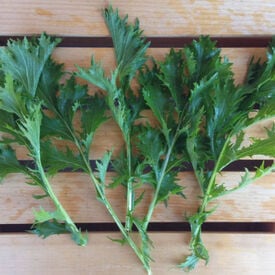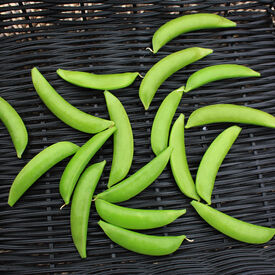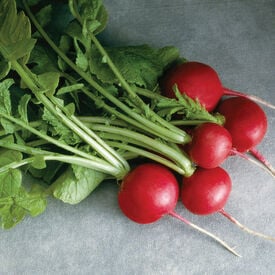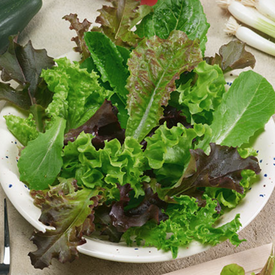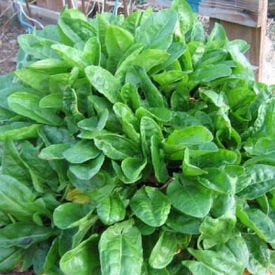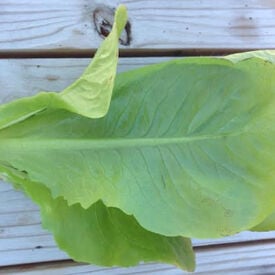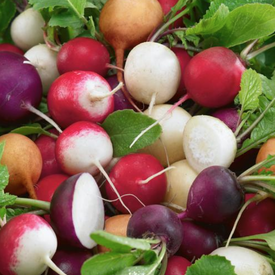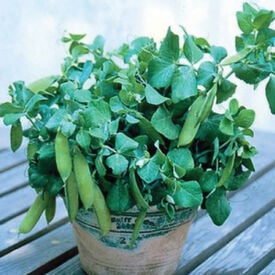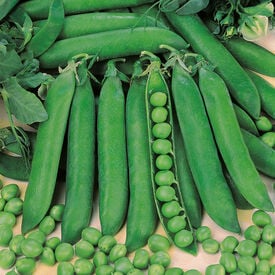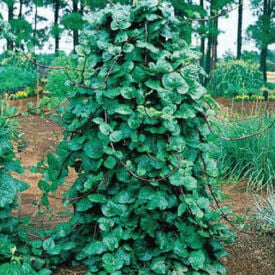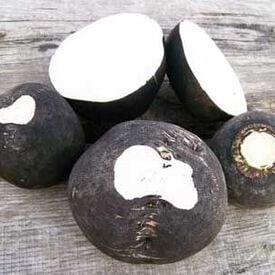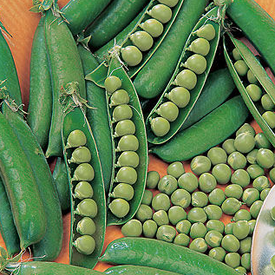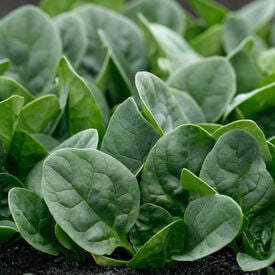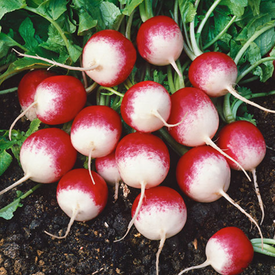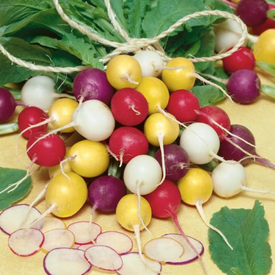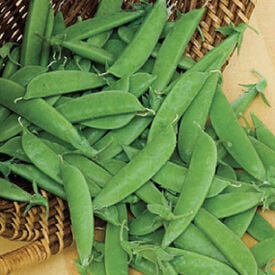Mizuna Green Mustard is a tasty Asian spinach variety that is amazing raw in different salads or cooked. This variety's narrow green leaves are very tasty and have a non-pungent flavor. Mizuna Green Mustard is fast growing and produces high yields. This green is popularly used in many salad mixes! Organic seed available.
Little SnapPea Crunch is perfect for smaller gardens or container growing! These pea plants are compact yet very productive. Little SnapPea Crunch produces crunchy, sweet, juicy, edible pod peas in about 58-60 days. These peas do well as the weather warms and pea shoots, mature in 13 days and displays very short internodes. Leaves are great as a garnish or as a stand-alone salad green.
Crunchy Red produces large tops and very uniform dark red, round roots. This variety is very slow to develop pith. It performs well under cool conditions. It’s usually a few days earlier than standard varieties. Crunchy Red is desirable where larger roots are required.
The Spicy Salad Blend is the perfect balance of lettuce and mustard greens. This blend produces a great flavor profile that will spicy up any regular salad mixture.
The Large Leaf Sorrel has delicious lemon flavored leaves that go great with a zesty salad or savory soup! These greens are best harvested in early spring and late fall when it's most tender. Garden Sorrel has pointed leaves that form thick clumps. The Garden Sorrel is popular for being high in Vitamin C.
The Winter Density Lettuce is a favorite cold weather Romaine! This variety produces compact, extra-dark green heads that are 8" tall and very tightly folded. The Winter Density gets its name for doing well in the cold weather!
The Fiesta Blend is a five color radish blend of red, pink, yellow, white and purple! This colorful blend will be sure to a pop of fun color to any garden. Serving up the Fiesta Blend in salads or dishes is a great addition to any party or gathering!
Just like its name, the Tom Thumb Pea is a tiny bush pea plant perfect for containers! If you are hurting for space but want to grow some delicious peas, try the Tom Thumb! This pea variety produces pea pods on a tiny pea plant.
The Rondo Pea is a wrinkle-seeded variety that produces great yields of long, uniform pods that contain around 10 little plump peas per pod. This stocky, dark green pea is hardy and shows good resistance to Fusarium Wilt. This favorite has a delicious sweet flavor that can't be beat! The Rondo is perfect for freezing for soups and stews but is also amazing when eaten freshly picked!
The spicy flavor, attractive purple stems, and green leaves of the Hong Vit Radish makes it a favorite among many growers! This radish variety is also a very fast growing microgreen. The Hong Vit grows straight with hairless attractive purple stems. Micro Hong Vit's leaves add a spicy flavor, visual appeal, and bulk to mixes!
The Malabar Red Stem Spinach is a beautiful climbing spinach that looks and taste great! This vigorous climbing vine needs to be trellised and grows into fall. This spinach variety has a taste that resembles a mild Swiss chard. Use Malabar Red Stem's leaves and young stems sparingly in salads or stir-fries.
New Zealand spinach, known scientifically as Tetragonia tetragonioides, is a unique leafy green vegetable that thrives in warm climates, making it a popular choice in gardens. Unlike traditional spinach, which is a cool-season crop, New Zealand spinach is a perennial plant with succulent, triangular leaves that have a mild, slightly salty flavor. This hardy plant can tolerate heat and drought, making it ideal for summer gardens. It is often used in salads, stir-fries, and as a cooked green, providing a nutritious alternative to other leafy greens. With its ability to grow well in poor soil conditions and its attractive, sprawling growth habit, New Zealand spinach is not only a versatile culinary ingredient but also a valuable addition to edible landscapes.
Black Spanish Round Radish is a unique black old heirloom that has a nutty and slightly spicy flavor! This black beauty radish is making a comeback! Its firm flesh holds up well in meals. The Black Spanish Round is best grown from late winter to early spring and is a healthy spring vegetable.
The Spring Pea is the sweetest pea pod you can grow in the garden! This variety is a very early maturing medium sized pea plant that produces super sweet peas. Spring bears large crops of pods that hold 6 to 7 plump peas that are delicious in soups and stews.
Countryside is a beautiful dark green very uniform baby leaf spinach variety. It has thick smooth round oval leaves. Countryside has good holding ability for baby leaf and it has acceptable bolt tolerance for fresh market growers. Due to its moderate growth habit, it has performed well in many West Coast baby leaf growing slots.
The Sparkler Radish is a bright scarlet colored radish with a sweet, juicy flesh and snappy flavor. This variety's scarlet skin fades to white on lower 1/3 of its round, to round oval bulb. This radish's medium tops are perfect for both home and market gardens. Sparkler can grow up to 1.5" diameter.
The Crayon Colors Mix is a mixture of primary colored radishes that literally paints a wonderful colorful palette in your garden! The color in this mix includes yellow, pink, red, and purple.
The Super Sugar Pea is an improved original tall snap pea that is bursting with a sugary sweet flavor! This plant variety has a very high yield potential and even better flavor than before being improved, making it a favorite to add to many dishes.
